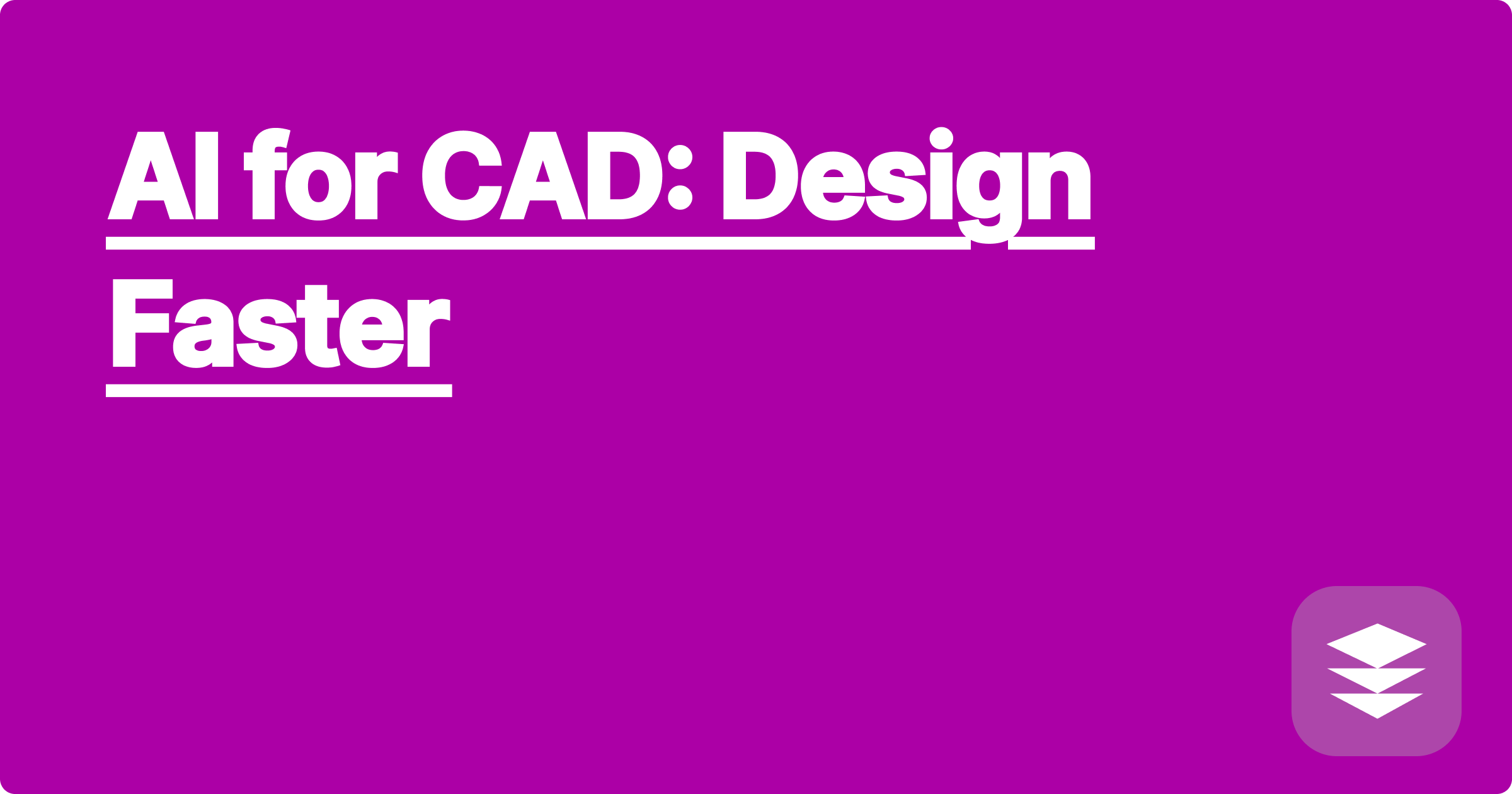
The ever-increasing complexity of modern engineering design demands faster and more efficient Computer-Aided Design (CAD) workflows. STEM students and researchers face the challenge of translating complex theoretical concepts into tangible designs, often hampered by the time-consuming nature of traditional CAD processes. Artificial intelligence (AI) offers a powerful set of tools to accelerate design cycles, enabling engineers to explore a wider range of design possibilities and optimize performance more effectively. This shift towards AI-driven CAD represents a paradigm shift in engineering design, empowering the next generation of innovators to push the boundaries of what’s possible.
For STEM students, mastering AI-powered CAD tools is no longer a luxury but a necessity. These tools provide a competitive edge in the job market and equip researchers with the capabilities to tackle complex design challenges in fields ranging from aerospace and automotive to biomedical engineering and robotics. Embracing these technologies will be crucial for accelerating scientific discovery and technological innovation. This blog post explores how AI can revolutionize CAD workflows, providing practical guidance and examples for STEM students and researchers eager to harness the power of AI for faster, more efficient design.
The traditional CAD design process often involves a tedious iterative cycle of sketching, modeling, simulation, and refinement. Each iteration can take significant time, especially for complex designs with intricate geometries and multiple components. This iterative process can be particularly challenging when exploring a large design space, where numerous variations need to be evaluated. Furthermore, manually optimizing designs for specific performance criteria can be time-consuming and require specialized expertise. The limitations of traditional CAD workflows often restrict the scope of design exploration, potentially leading to suboptimal solutions.
AI tools like ChatGPT, Claude, and Wolfram Alpha offer a powerful alternative to traditional CAD workflows. ChatGPT and Claude can be used to generate design ideas, create scripts for automating repetitive tasks, and even generate CAD code directly from natural language descriptions. Wolfram Alpha, with its powerful computational engine and vast knowledge base, can be used for complex calculations, simulations, and optimizations, significantly speeding up the design process. By integrating these AI tools into the CAD workflow, engineers can automate tedious tasks, explore a wider range of design options, and optimize designs more efficiently.
Begin by clearly defining the design problem and specifying the desired performance criteria. This involves identifying the key design parameters, constraints, and objectives. Next, use natural language processing (NLP) capabilities of tools like ChatGPT or Claude to generate initial design concepts. Describe the desired functionality and constraints in plain English, and the AI can suggest potential design approaches or even generate basic CAD sketches. Then, refine these initial concepts using traditional CAD software, leveraging AI-powered features for automated modeling and parameter optimization. Wolfram Alpha can be used to perform complex calculations and simulations, providing valuable insights into the performance of different design iterations. Finally, iterate on the design based on the simulation results and feedback, using AI tools to automate the refinement process and explore variations.
Consider designing a lightweight bracket for an aircraft wing. You can use ChatGPT to generate initial design concepts based on specified load requirements and material constraints. Inputting a prompt like "Design a lightweight bracket to support a load of 1000N using aluminum alloy" can yield different bracket configurations. Then, use traditional CAD software to model these concepts and Wolfram Alpha to calculate stress distributions under the specified load. For example, using Wolfram Alpha, you could input queries like “stress in a cantilever beam with length L, width W, height H, and load F” to obtain analytical solutions or use built-in functions for more complex scenarios. The results can then inform further design iterations, optimizing the bracket's shape and dimensions to minimize weight while meeting the strength requirements. Another example is designing a heat sink for an electronic component. Using ChatGPT, you can explore different fin configurations and materials. Wolfram Alpha can then be used to calculate heat transfer rates, optimizing the design for efficient cooling. You might use a query like "calculate the thermal resistance of a rectangular fin with length L, width W, thickness t, and thermal conductivity k." This iterative process, aided by AI, allows rapid exploration and optimization of the design.
To effectively leverage AI in STEM education and research, develop strong foundational knowledge in your respective field. Understanding the underlying principles of engineering, mathematics, and physics is essential for interpreting AI-generated results and making informed design decisions. Experiment with different AI tools and platforms to identify the best fit for your specific needs. Familiarize yourself with the strengths and limitations of each tool. Develop proficiency in using natural language to interact with AI tools effectively. Clearly and concisely describe your design requirements and constraints to obtain relevant and useful results. Critically evaluate the output generated by AI tools, ensuring it aligns with your design objectives and engineering principles. AI should be viewed as a powerful tool to augment, not replace, human expertise. Collaborate with peers and mentors to share best practices and learn from each other's experiences. The collaborative use of AI can accelerate learning and foster innovation.
Start by exploring the free versions of ChatGPT and Wolfram Alpha to familiarize yourself with their capabilities. Experiment with simple design problems to gain hands-on experience. Explore online tutorials and resources to learn more about advanced features and techniques. Consider enrolling in online courses or workshops focused on AI-powered CAD design. Continuously explore new AI tools and techniques as they emerge, staying at the forefront of this rapidly evolving field. By actively engaging with these technologies, you can unlock their full potential and transform your CAD workflows.
AI Homework Help: STEM Made Easy
Ace STEM Exams: AI Study Guide
AI for Lab Reports: Data Analysis